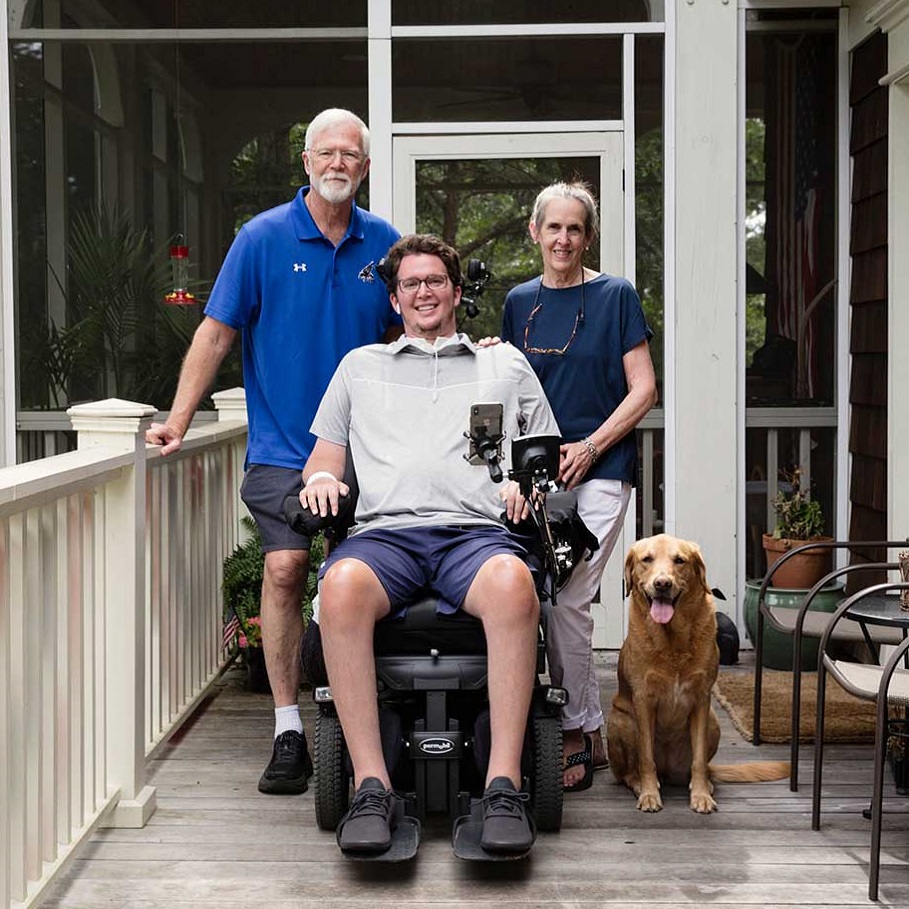Diaphragm Paralysis and Phrenic Nerve Reconstruction in New Jersey
Hackensack Meridian Neuroscience Institute uses advanced treatment options to restore function to patients who experience diaphragmatic paralysis or weakness.
Your diaphragm helps you breathe by forcing air in and out of your lungs. It is controlled by the phrenic nerve, which is attached to the neck area of your spine. Patients with a paralyzed diaphragm have reduced breathing capabilities or are unable to control their voluntary breathing.
Diaphragm paralysis can be unilateral or bilateral.
- Unilateral paralysis involves one side of the diaphragm. This means that the diaphragm is partially functioning, and the part that is paralyzed takes up more space in the chest cavity meant for the lungs which interferes with breathing.
- Bilateral paralysis occurs when the entire diaphragm is paralyzed. This means that the diaphragm is unable to function in inhalation and exhalation and often requires a machine to assist with breathing.
Find a Paralysis and Reconstructive Nerve Surgery Expert
Our interprofessional team provides treatments and approaches dedicated to help you regain function, breathe easier and eliminate or reduce discomfort so you can live your best life. We bring together different specialists across New Jersey to provide you with a comprehensive, convenient care experience.
What Causes Diaphragm Paralysis or Weakness?
Typically, diaphragm paralysis or weakness is caused by pressure on the phrenic nerve or damage to the nerve itself which makes breathing difficult. Phrenic nerve damage can be caused by:
- Birth defects
- Diseases of the nervous system, such as amyotrophic lateral sclerosis (ALS) or multiple sclerosis
- Injury, such as an upper cervical spinal cord injury that has spared the phrenic nerve
- Phrenic nerve fraying or damaging following cardiothoracic or pulmonary surgery
- Cervical spine arthritis
- Cancer that has spread and compresses the phrenic nerve
Diagnosing and Treatments for Diaphragm Paralysis
Damage to the phrenic nerve causing diaphragm paralysis is challenging to diagnose because the symptoms are similar to those suffering from pneumonia and asthma. We perform electrodiagnostic tests, electromyography, and nerve conduction studies that look at the diaphragm muscle and phrenic nerve function to identify the underlying cause.
Our treatments encompass a range of methods to restore function that have been damaged through disease or nerve injury. Our comprehensive management includes a series of non-surgical and physical/occupational therapy treatment options. Surgical options are also available for more advanced cases or if breathing becomes so limited that daily activities are affected.
- Phrenic nerve surgery to reverse diaphragm paralysis and restore breathing functionality.
- Diaphragm pacemaker surgery for those who are oxygen- or ventilator-dependent, such as those with high spinal cord injury or ALS (Lou Gehrig’s disease).
- Video-assisted thoracic surgery (VATS) for patients who are ventilator-dependent or who struggle to perform daily tasks while breathing normally.
Frequently Asked Questions About Diaphragmatic Paralysis
Diaphragm paralysis or weakness is usually caused by pressure on or damage to the phrenic nerve, which controls the diaphragm. Common causes include:
- Birth defects
- Diseases like ALS (amyotrophic lateral sclerosis) or multiple sclerosis
- Upper cervical spinal cord injuries
- Damage after heart or lung surgery
- Cervical spine arthritis
- Cancer pressing on the phrenic nerve
You can find care from Hackensack Meridian Health’s interprofessional team at several convenient locations, including:
- Hackensack University Medical Center at Hackensack, NJ
- JFK University Medical Center at Edison, NJ
- Jersey Shore University Medical Center at Neptune, NJ
- JFK Johnson Rehabilitation Institute
Hackensack Meridian Neuroscience Institute offers a range of treatments, including:
- Non-surgical therapies and physical or occupational therapy
- Phrenic nerve surgery to restore breathing
- Diaphragm pacemaker surgery for patients who rely on oxygen or a ventilator
- Video-assisted thoracic surgery (VATS) for those who struggle with daily breathing










